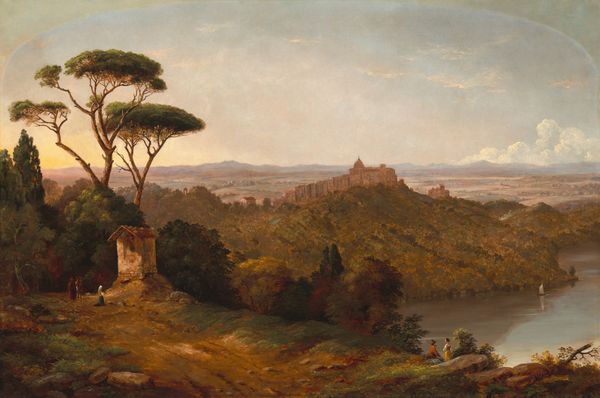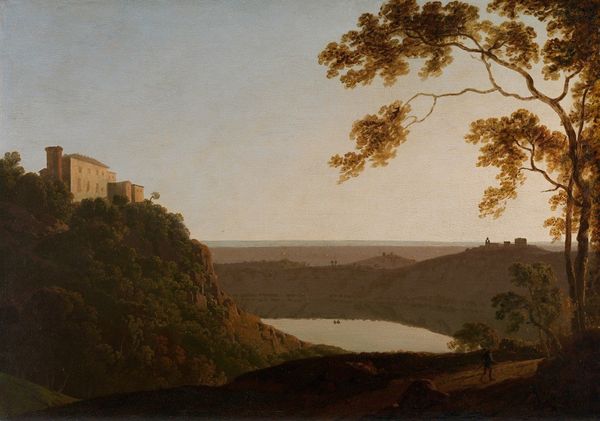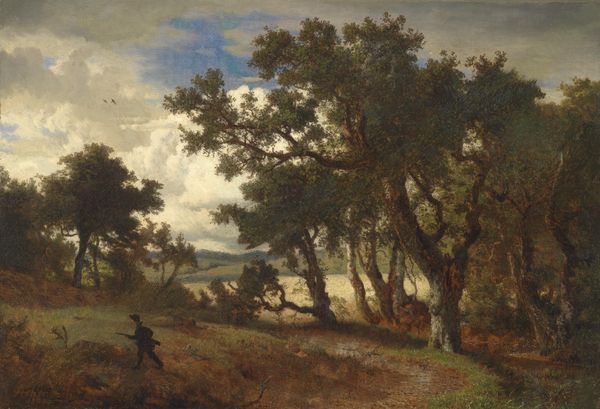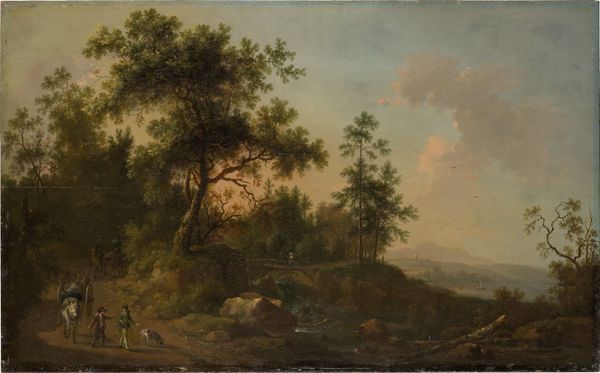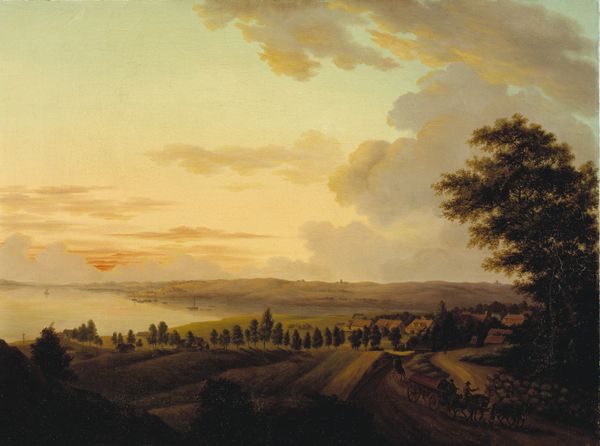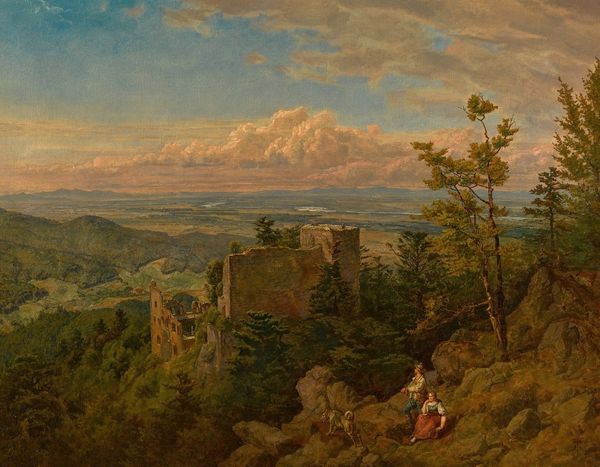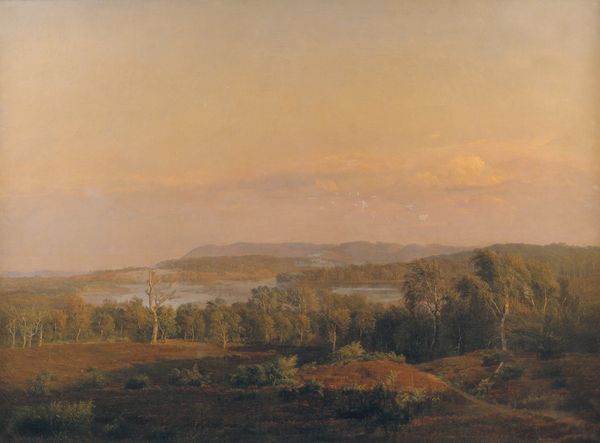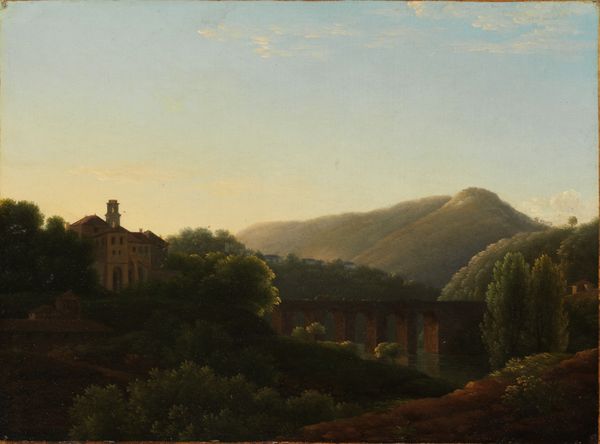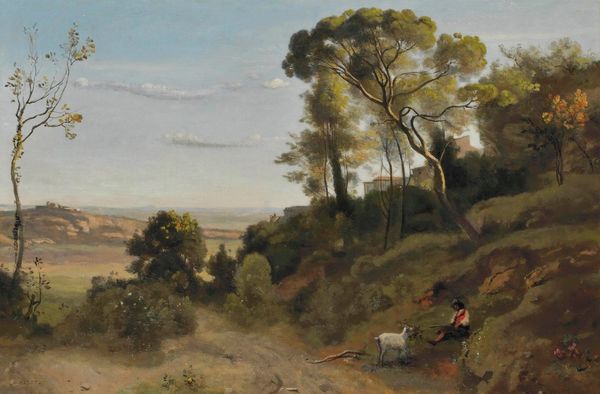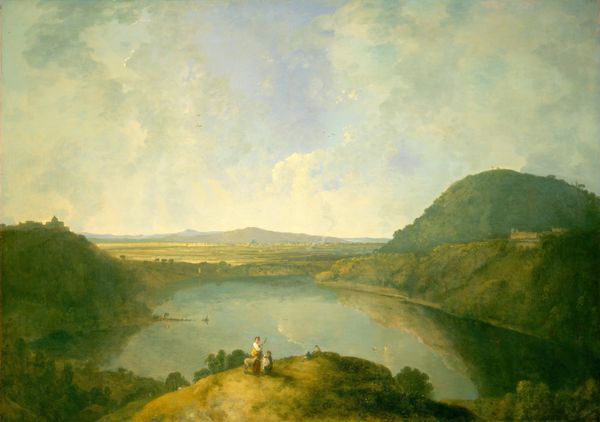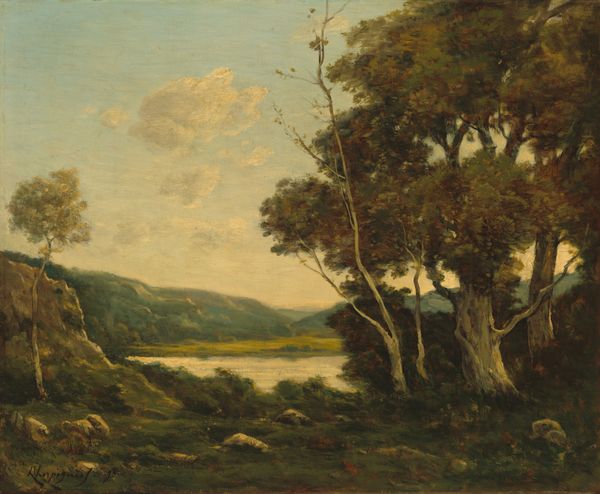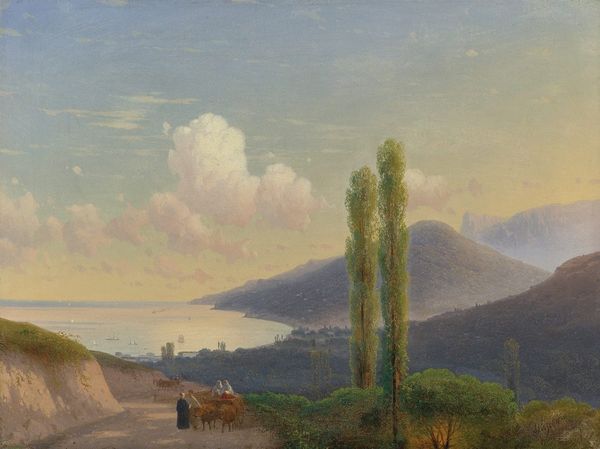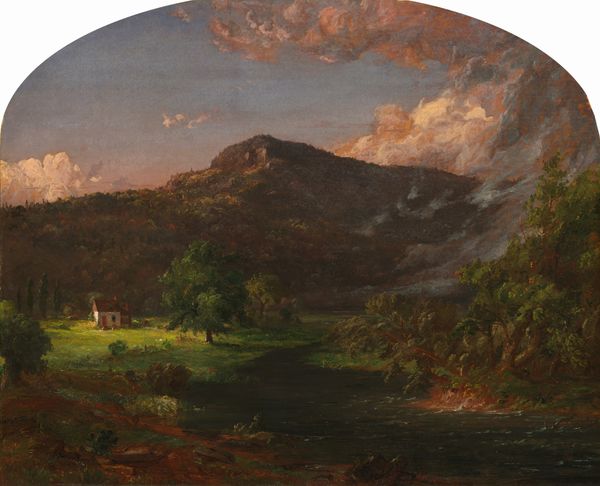
#
abstract painting
#
impressionist painting style
#
landscape
#
impressionist landscape
#
possibly oil pastel
#
oil painting
#
acrylic on canvas
#
underpainting
#
painting painterly
#
watercolour illustration
#
watercolor
Copyright: Public Domain: Artvee
George Inness created this landscape painting of the Tiber River, likely sometime in the mid-19th century, when artists turned to nature seeking a reprieve from rapid industrialization. Inness, influenced by the Barbizon school, veered away from detailed representations, choosing instead to evoke the emotional resonance of a place. The dark foreground against the soft, light-filled distance creates a sense of depth, but also perhaps, of longing. The figures in the foreground appear to be a mother and child. As such, the land holds a symbolic weight, representing a space of safety, nurture, and heritage. How does the notion of landscape shift when we acknowledge that throughout history, access to land has been shaped by power dynamics related to gender, race and class? How does our emotional response to landscape shift when we acknowledge such histories?
Comments
No comments
Be the first to comment and join the conversation on the ultimate creative platform.
